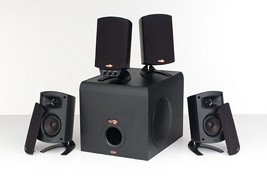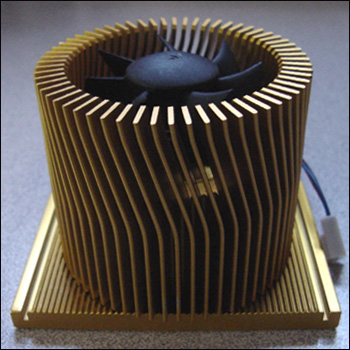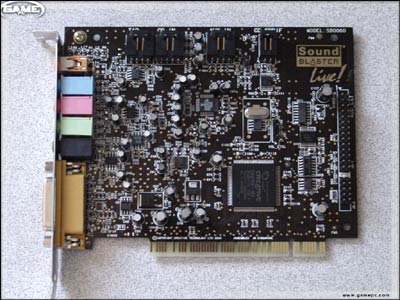Tech Extreme heeft een korte review gebakken van de HP 932C kleurenprinter. Deze printer bleek in staat te zijn om afdrukken van zeer hoge kwaliteit af te leveren en dat ook nog eens redelijk snel te kunnen doen. Verder was hij makkelijk te installeren en dat alles voor een prijs van nog geen 200 dollar:
Box Specifications:
[...] It won't bust any budgets, and it will impress. Additionally, supposing you paid a big sum of money to get a high-powered gaming computer and don't have much left over for a printer, this is a quality, albeit somewhat basic, solution for you. Put this on your Christmas list.
- Black speed: 9 ppm
- Color speed: Up to 7.5 ppm
- Compatibility: Windows 98, 95, NT 4.0, Windows 2000 Professional, Windows 3.1x (Enhanced Mode only), with USB support for Windows 98 and 2000 Professional, plus MS-DOS applications (through Windows 98, 95, and 3.1x), and Mac OS 8.1 or above (USB-connect Macintosh only).
- Special Features: Optional home networking with HP Jetdirect 70X Home Print Server, optional automatic duplexing with HP two-sided printing accessory, print-cancel button and low-ink indicator
- Black Resolution;600 dpi with HP REt (Resolution Enhancement Technology) Color Resolution: Up to 2400 x 1200 dpi on photo paper
- Print Technology: HP PhotoREt III
- Paper Capacity: 100 sheets

 Overall: These are some pretty nice speakers. They perform well in most gaming situations and provide a well rounded listening experience. They are well crafted, look great, and have some very nice touches that make them worth considering. The bass is absolutely huge, so if bass is the most important thing to you, these may indeed be what you want. They also have some pretty good treble performance as well. We did find that at low volumes, the speakers were almost a bit too intense for our ears. We had to throttle back the subwoofer in low volume situations such as late night writing and MP3 listening sessions. If we did not, the rumble of the subwoofer could be heard easily in the adjoining rooms.
Overall: These are some pretty nice speakers. They perform well in most gaming situations and provide a well rounded listening experience. They are well crafted, look great, and have some very nice touches that make them worth considering. The bass is absolutely huge, so if bass is the most important thing to you, these may indeed be what you want. They also have some pretty good treble performance as well. We did find that at low volumes, the speakers were almost a bit too intense for our ears. We had to throttle back the subwoofer in low volume situations such as late night writing and MP3 listening sessions. If we did not, the rumble of the subwoofer could be heard easily in the adjoining rooms.
 At $139 for a 64MB Evil Kyro, the Kyro has promise and should carve out a niche in this highly competitive market. Although the frame buffer memory is only SDR, with tile-based rendering the SDR bandwidth should suffice. With 32MB cards likely to cost under $100, Kyro based boards will be some of the cheapest graphics cards available with modern 3D chips. A bonus for the Kyro is good 2D performance. The Kyro's 2d core is at least on par with the GeForce's, if not slightly better.
At $139 for a 64MB Evil Kyro, the Kyro has promise and should carve out a niche in this highly competitive market. Although the frame buffer memory is only SDR, with tile-based rendering the SDR bandwidth should suffice. With 32MB cards likely to cost under $100, Kyro based boards will be some of the cheapest graphics cards available with modern 3D chips. A bonus for the Kyro is good 2D performance. The Kyro's 2d core is at least on par with the GeForce's, if not slightly better.
 From the perspective of the motherboard manufacturers, the ALi MAGiK 1 is a superior solution to AMD's 760 because of its PC100/PC133 SDRAM support, enabling the construction of custom boards for OEMs and system integrators that desire both SDR and DDR SDRAM support on a board.
From the perspective of the motherboard manufacturers, the ALi MAGiK 1 is a superior solution to AMD's 760 because of its PC100/PC133 SDRAM support, enabling the construction of custom boards for OEMs and system integrators that desire both SDR and DDR SDRAM support on a board.
 135)
135) 1)
1) )
)

:strip_exif()/i/1100681420.jpg?f=fpa)
 While I am here writing this little Pentium 4 blurb, I would like to mention something that has annoyed me in the last days. Quite a few people complained to me why I was running Pentium 4 at 100 MHz bus clock, although the right bus clock of Pentium 4 would be 400 MHz. This is of course WRONG! Pentium 4's bus clock is 100 MHz! Add Intel's marketing machine to that and suddenly it becomes 400 MHz, because Intel considers the people out there as too dumb to understand that the bus is indeed 100 MHz, but quad-pumped, which enables it to transfer four times as much data per clock than what previous Intel processors were able to do.
While I am here writing this little Pentium 4 blurb, I would like to mention something that has annoyed me in the last days. Quite a few people complained to me why I was running Pentium 4 at 100 MHz bus clock, although the right bus clock of Pentium 4 would be 400 MHz. This is of course WRONG! Pentium 4's bus clock is 100 MHz! Add Intel's marketing machine to that and suddenly it becomes 400 MHz, because Intel considers the people out there as too dumb to understand that the bus is indeed 100 MHz, but quad-pumped, which enables it to transfer four times as much data per clock than what previous Intel processors were able to do.